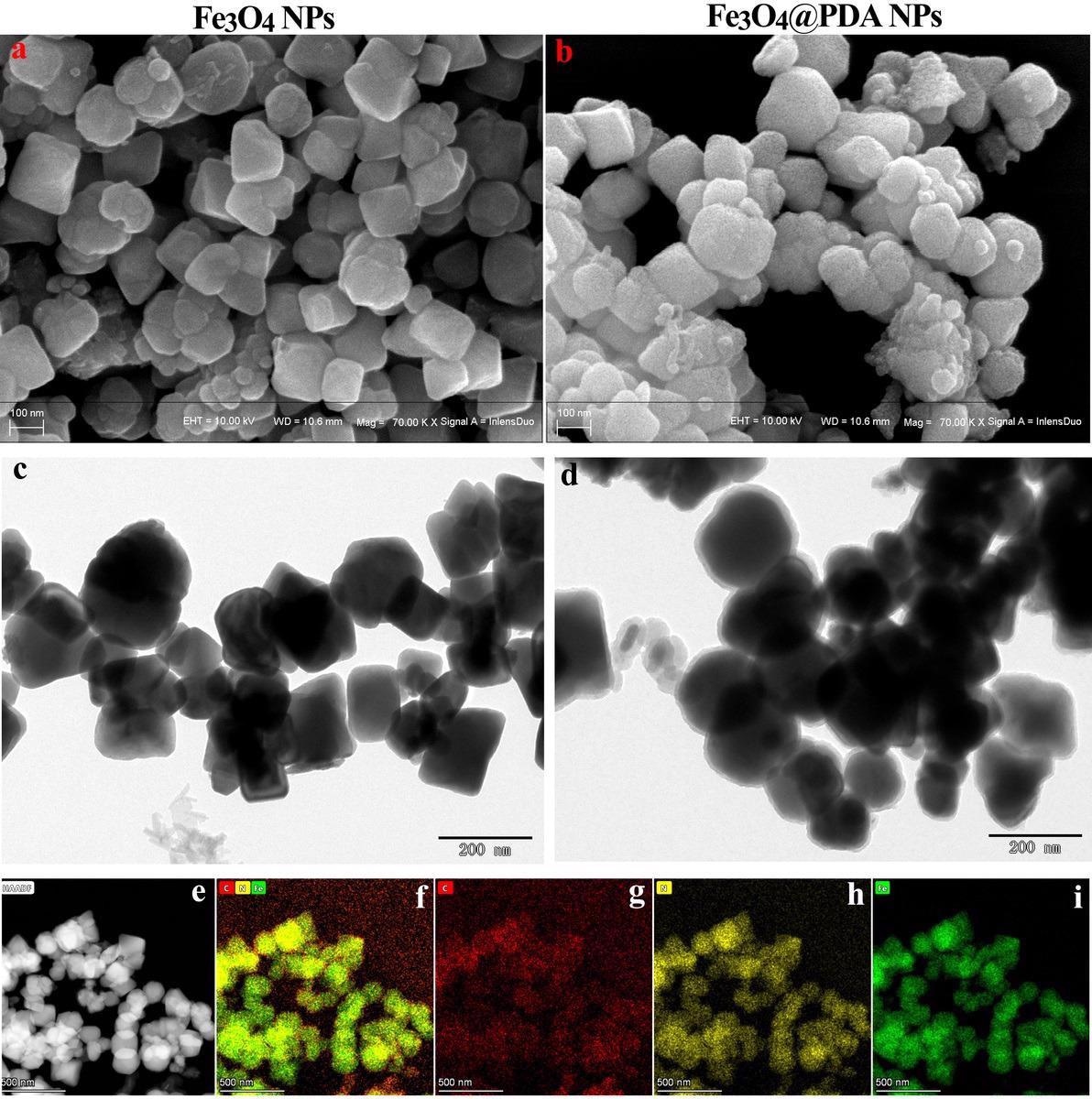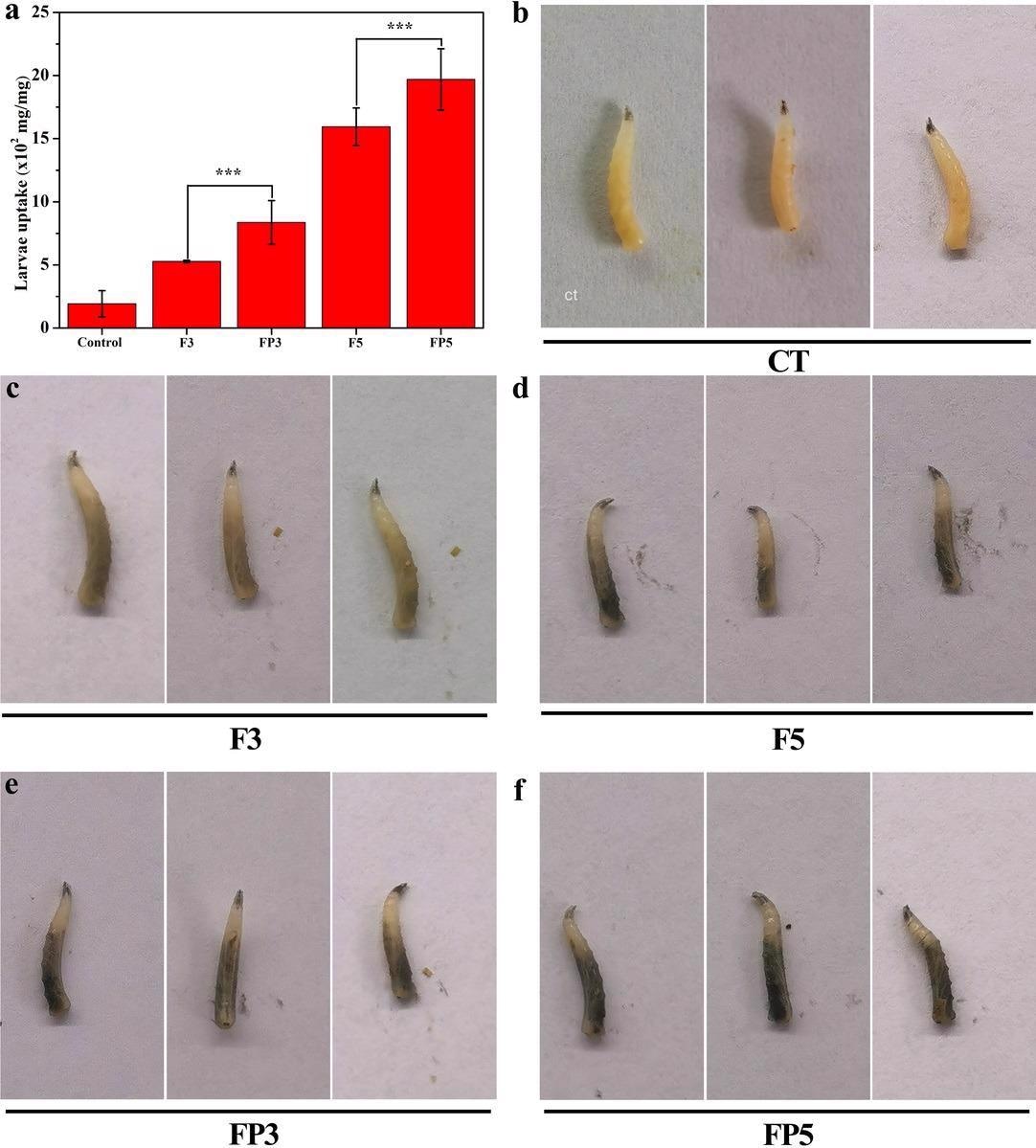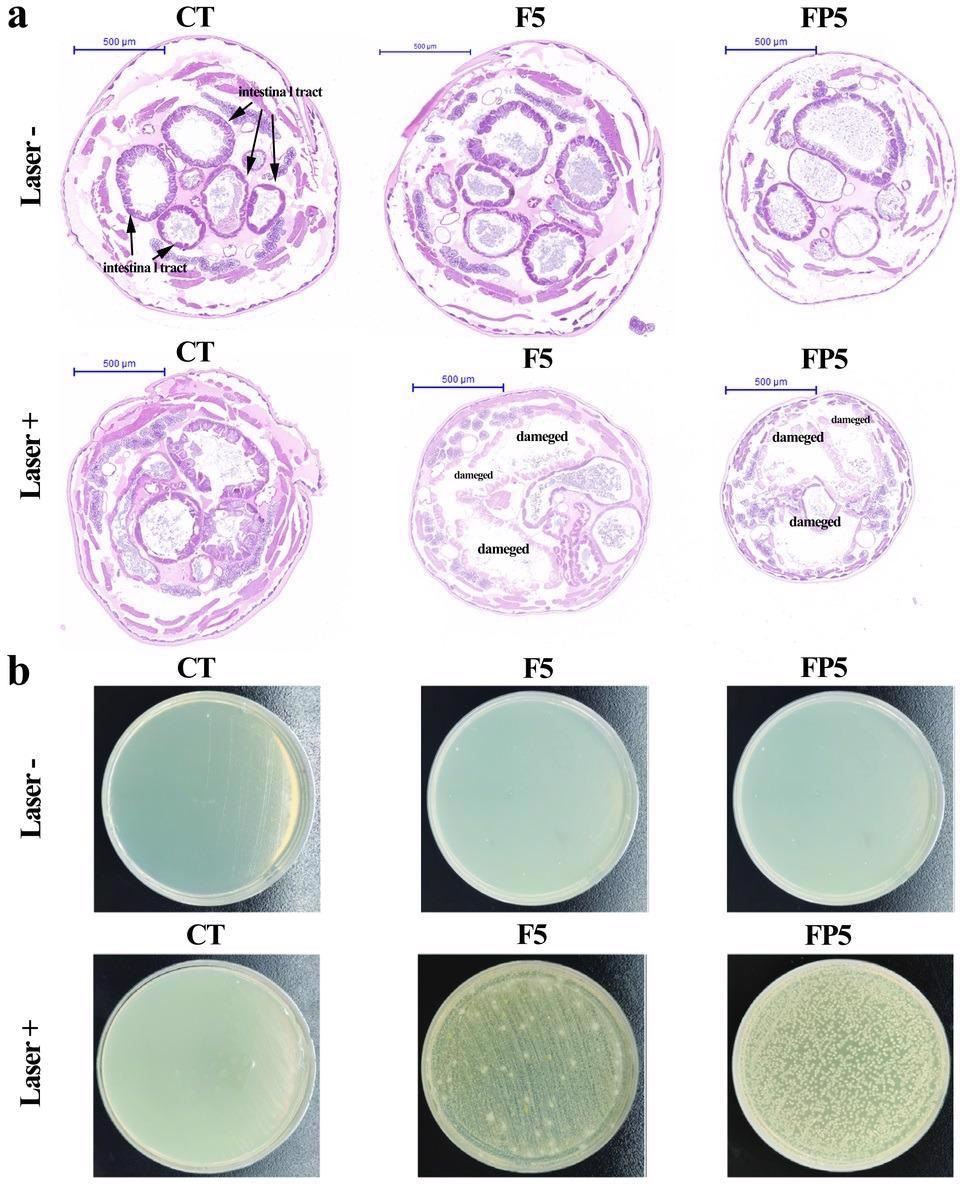Research submitted to the preprint server Research Square,* investigated the effectiveness of polydopamine (PDA)-coated iron oxide (Fe3O4) as a photothermal insecticide.

Study: NIR laser-activated polydopamine-coated Fe3O4 nanoparticles used as a novel precise photothermal insecticide. Image Credit: Thichaa/shutterstock.com
Background
Musca domestica Linnaeus or housefly, a synanthropic fly found in human, livestock, and poultry facilities, is one of the major pests that cause several diseases in humans. Houseflies are responsible for helminthic, protozoan, bacterial, rickettsial, and viral infections, and act as carriers of over 65 animal and human intestinal diseases.

Figure 1. SEM images of (a) Fe3O4 NPs and (b) Fe3O4@PDA NPs. TEM images of (c) Fe3O4 NPs and (d) Fe3O4@PDA NPs. (e) HAADF-STEM images of Fe3O4@PDA NPs. Elemental mapping of Fe3O4@PDA NPs: (f) merged image, (g) C, (h) N and (i) Fe. © Wang, H., Zhang, Q., Zhang, X. et al.(2022)
Houseflies can also infect skin and wounds while house fly larvae can cause myiasis in the human intestinal tract and oral cavity. In the United States, poultry farms annually spend a substantial amount to control and prevent houseflies.
Traditional pest control methods primarily involve the use of chemical insecticides, odor-baited traps, electrocuting light traps, and physical patting. However, the rapid accumulation of dust and low efficiency are the major disadvantages of these methods.
Although the commonly used chemical control methods are effective in controlling housefly populations, excessive use of chemical pesticides can lead to pesticide resistance among houseflies, as well as ecological imbalance and environmental disruption.
Nanopesticide carriers based on inorganic nanoparticles (NPs) or organic polymers have gained prominence in recent years as they can increase pesticide utilization efficiency and reduce the toxic effects of pesticides on the environment.
However, nanoscale pesticides can also lead to pesticide resistance as their mode of application is similar to traditional chemical or biological pest control techniques, which necessitated the identification of new precise and disruptive pest control strategies.
Internal/external stimulus-responsive smart NPs featuring precise theranostics were previously used extensively in several fields. Among them, photothermal materials gained more attention due to their ability to convert visible to near-infrared (NIR) light into heat and ensure thermal ablation of tissues and cells.
Housefly larvae can easily consume these nanoscale photothermal materials as they take up their food through broad scraping due to their limited motion.
In this study, researchers synthesized a NIR-activated Fe3O4@PDA nanoplatform to achieve precise photothermal control of housefly larvae.
The Study
Eco-friendly Fe3O4 magnetic NPs solution, tris (hydroxymethyl) aminomethane (Tris-HCl) buffer, purified and sterilized deionized (DI) water, and Musca domestica, the housefly colony, were used as starting materials in the study.
160 μL of Fe3O4 NPs were dispersed in 400 mL of tris-HCl buffer, and the mixture was sonicated for 5 min. Subsequently, 400 mg dopamine hydrochloride (DA·HCl) was added to the mixture, and the mixture was subjected to mechanical stirring for 3 h at 260 rpm. The resultant mixture was subjected to centrifugation and washed with DI water in order to obtain Fe3O4@PDA NPs.
Transmission electron microscopy (TEM) was used to observe the morphology of Fe3O4@PDA and Fe3O4 NPs, while an energy-dispersive X-ray spectroscopy detector system (EDS) was employed to evaluate the structure of the synthesized NPs.
The housefly larvae were fed with NP-treated milk powder and wet wheat bran, while the adults were fed with NP-treated water and brown sugar.
An artificial climate incubator with 70% relative humidity and a photoperiod of 12/12 h was used to raise both housefly larvae and adults at 25 ± 1℃ temperature.
In vitro photothermal conversion efficiency of Fe3O4@PDA NPs was measured by exposing 1.0, 0.5, and 0.1 mg/mL concentrations of synthesized NPs to NIR laser irradiation for 5 min.
The biosafety of Fe3O4@PDA NPs for larval development and intestinal microbial population in housefly larvae, as well as the uptake of the NPs by housefly larvae were evaluated.
Finally, the NIR laser-activated thermal control of housefly larvae and its mechanism were systematically investigated, and the recycling potential of uneaten NPs was evaluated.

Figure 2. (a) Uptake data for F3 vs. FP3, F5 vs. FP5. Data are reported as the ratio of Fe content in larvae to the body weight. Representative photographic image of (b) control larvae and larvae after feeding with (c) F3, (d) F5, (e) FP3, and (f) FP5 for two days. NP-free feeding materials were used to feed larvae serving as controls. © Wang, H., Zhang, Q., Zhang, X. et al.(2022)
Observations
A NIR-activated Fe3O4@PDA nanoplatform was successfully synthesized. The synthesized Fe3O4@PDA NPs displayed a shell/core morphology with an average particle size of 201.2 ± 17.0 nm.
The NPs demonstrated excellent photothermal performance with the NIR laser irradiation.
Larval uptake results demonstrated a higher in vivo uptake of Fe3O4@PDA NPs compared to Fe3O4 NPs in the housefly larvae when they were fed with an NP-treated diet. Fe3O4@PDA NPs showed favorable biocompatibility and no significant influence on the intestinal microbial population and larval development.
However, when the NPs were irradiated with NIR laser, they efficiently eliminated housefly larvae by hyperthermia. Hyperthermia caused damage in the intestinal wall of housefly larvae, leading to the leakage of intestinal microbes into the hemocoel.
Uneaten NPs were successfully collected by magnetic absorption. The collected NPs displayed exceptional thermal stability, indicating the recycling potential of these NPs.
To summarize, the findings of this study demonstrated that Fe3O4@PDA NPs can be used to achieve effective photothermal control of pests and eliminate the need for pesticides, which makes this nanoplatform a promising alternative to control vector diseases and pests.

Figure 3. (a) Representative H&E-stained images and (b) intestinal bacterial leakage tests of larvae collected before and after NIR laser irradiation. Each treatment included three biological replicates. CT: sterile water. Laser-: before NIR laser irradiation; Laster+: after NIR laser irradiation. © Wang, H., Zhang, Q., Zhang, X. et al.(2022)
*Important Notice
Research Square publishes preliminary scientific reports that are not peer-reviewed and, therefore, should not be regarded as conclusive, guide clinical practice/health-related behavior, or treated as established information
Reference
Wang, H., Zhang, Q., Zhang, X. et al. NIR laser-activated polydopamine-coated Fe3O4 nanoparticles used as a novel precise photothermal insecticide. 2022, PREPRINT https://www.researchsquare.com/article/rs-1356519/v1
Disclaimer: The views expressed here are those of the author expressed in their private capacity and do not necessarily represent the views of AZoM.com Limited T/A AZoNetwork the owner and operator of this website. This disclaimer forms part of the Terms and conditions of use of this website.